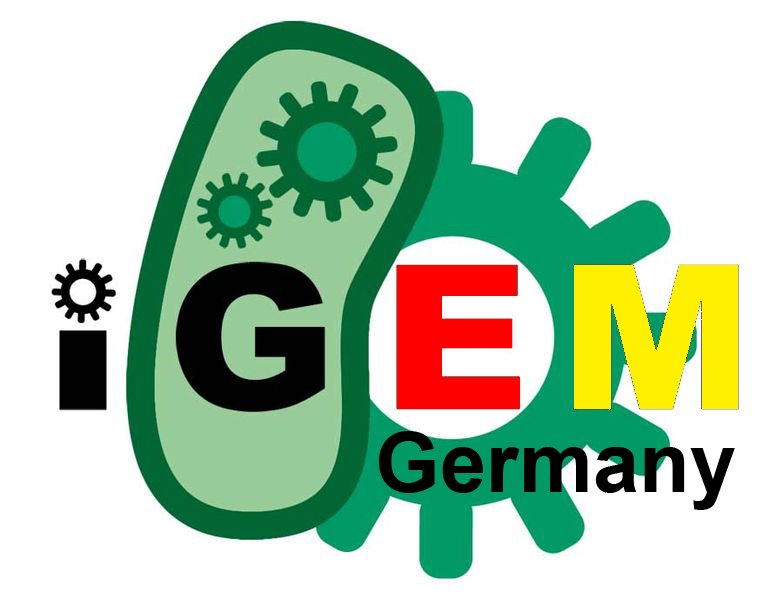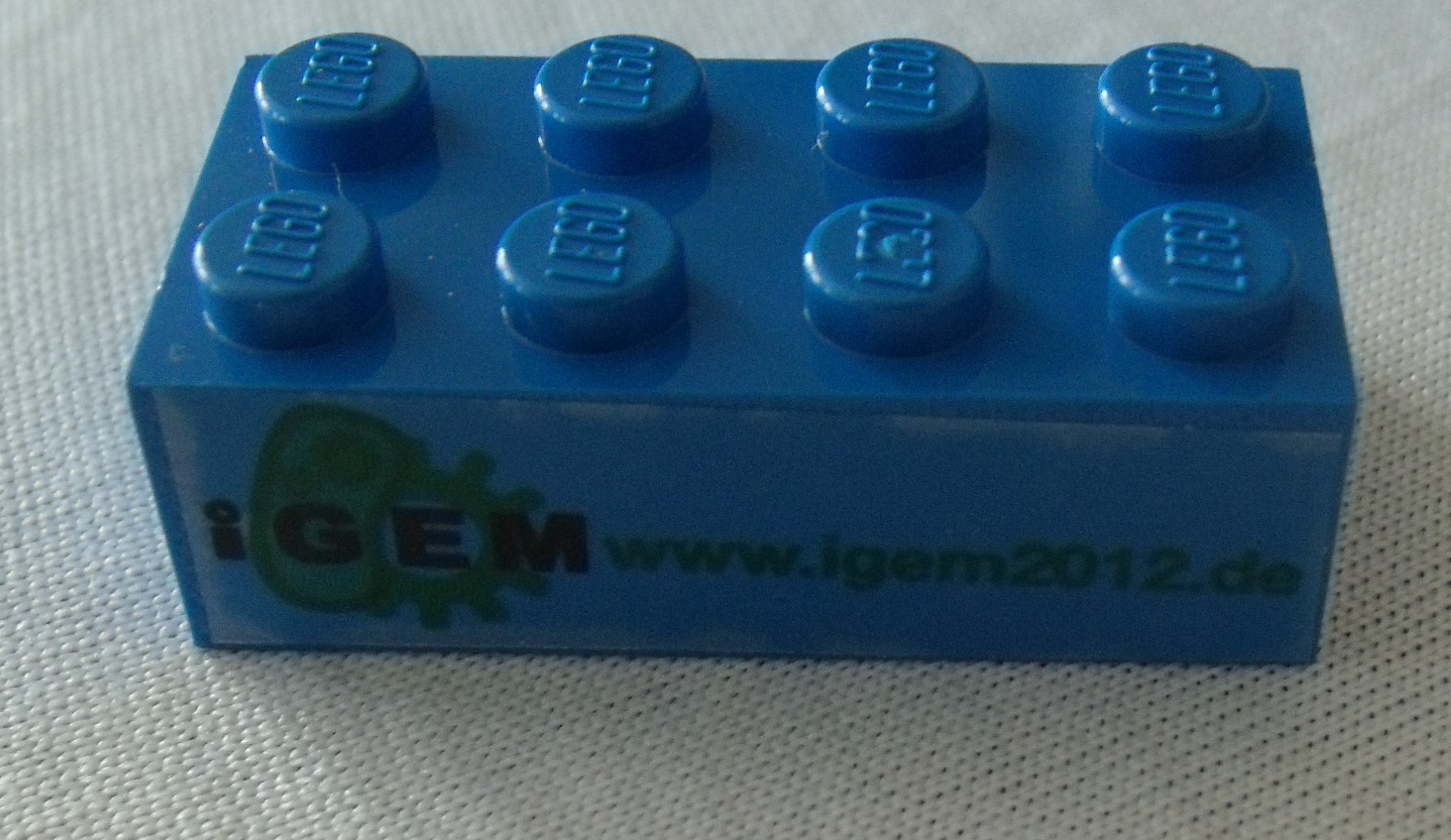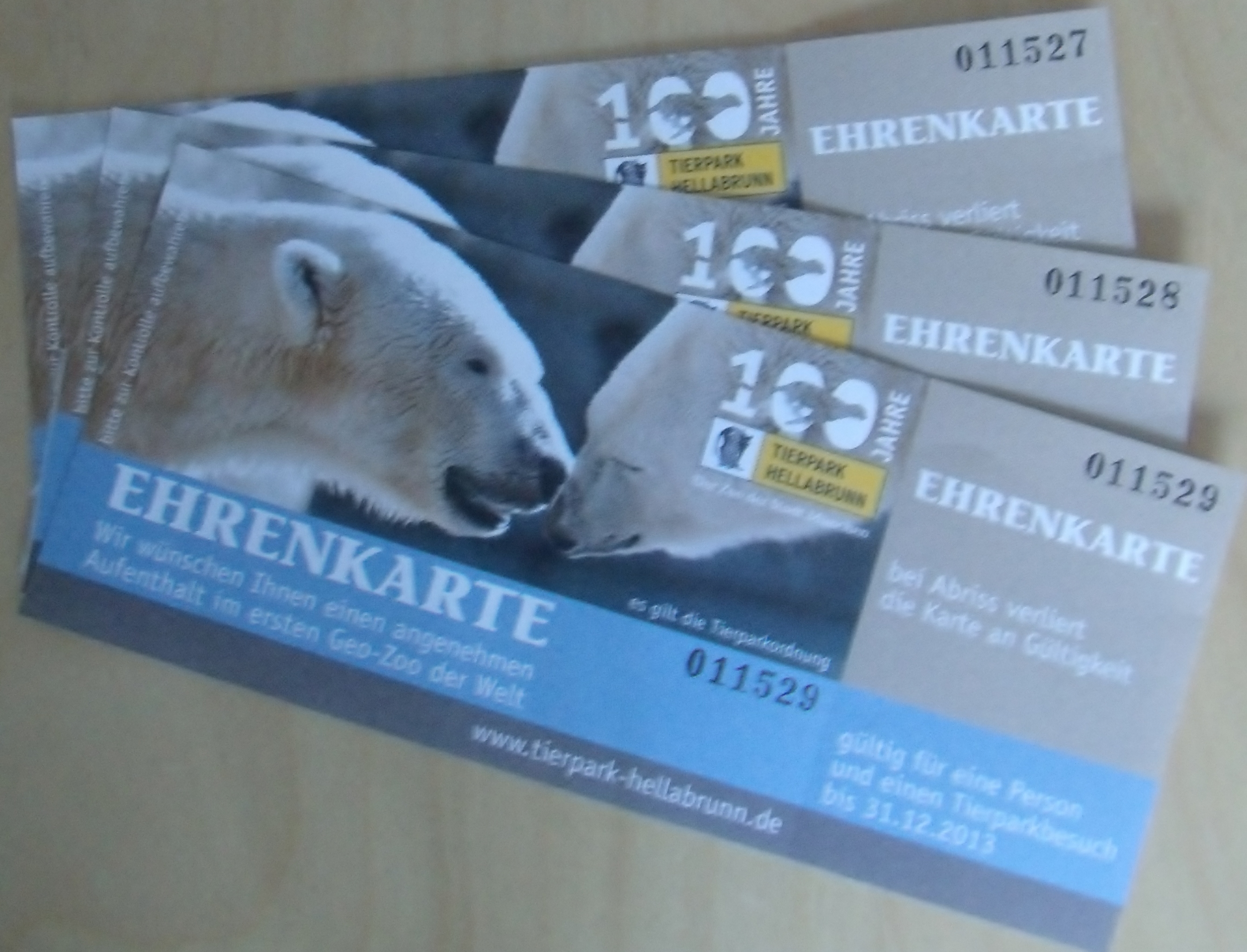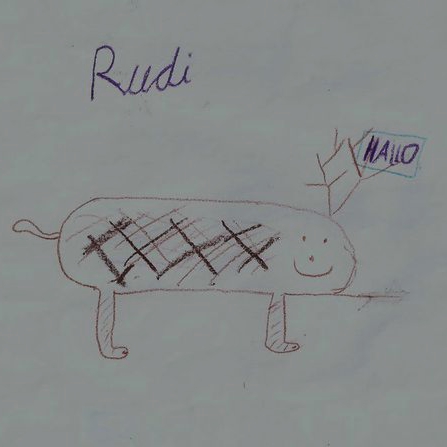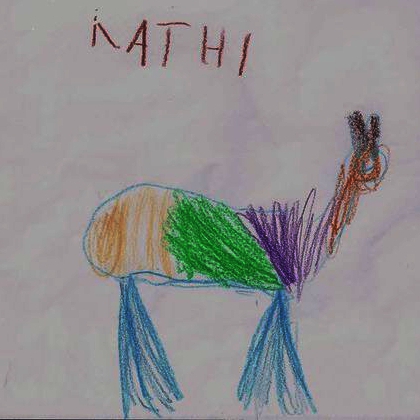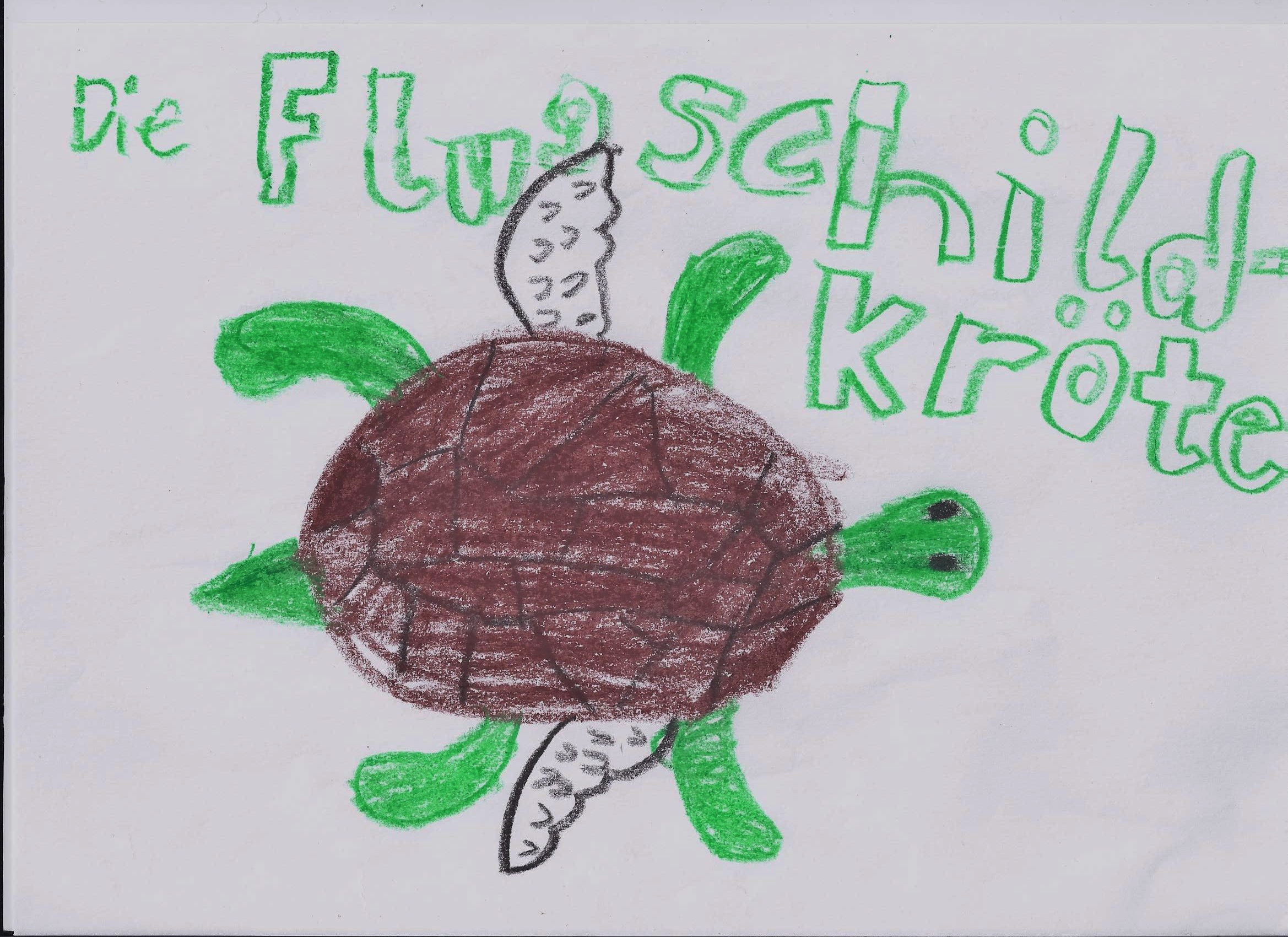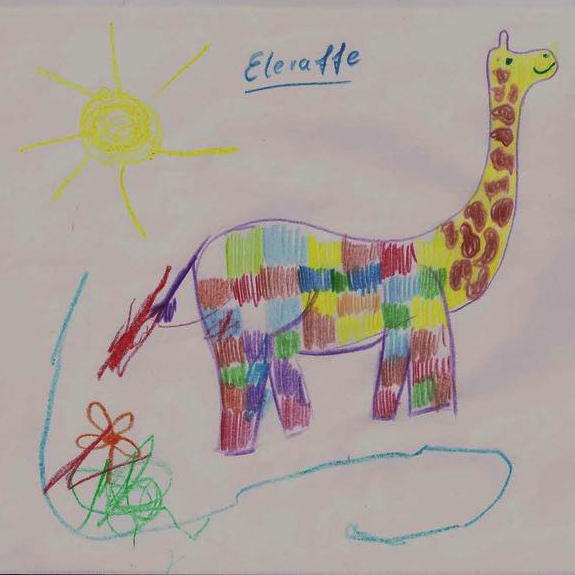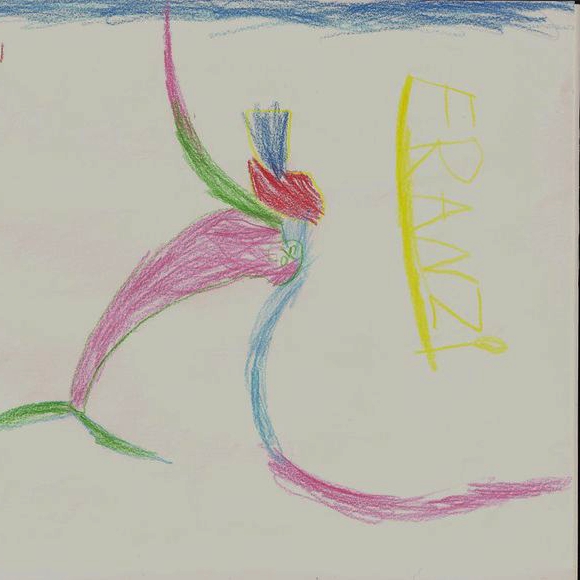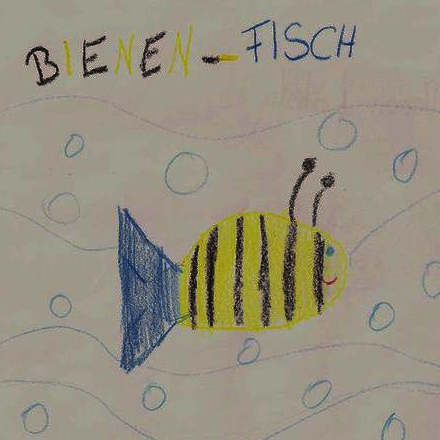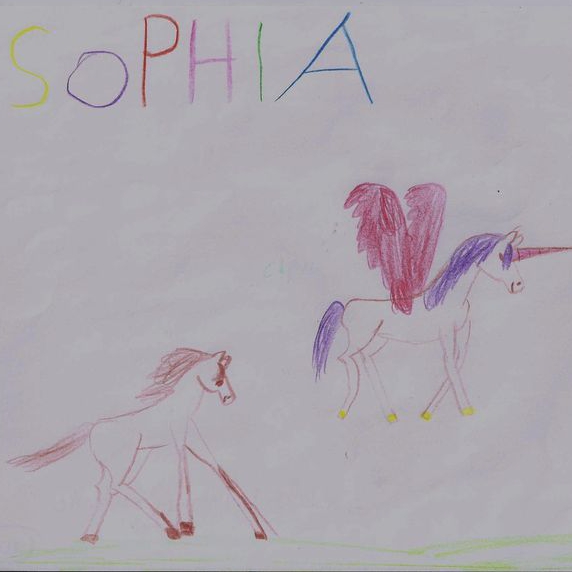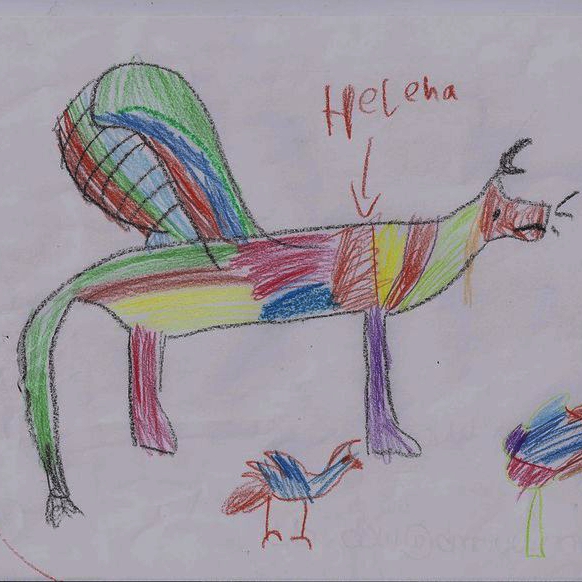Team:TU Munich/Human Practice/Information Day
From 2012.igem.org
Nadine1990 (Talk | contribs) (→Press release in English) |
Nadine1990 (Talk | contribs) (→Press Release in English) |
||
| (43 intermediate revisions not shown) | |||
| Line 2: | Line 2: | ||
{{Team:TU_Munich/Galleria}} | {{Team:TU_Munich/Galleria}} | ||
| - | ==iGEM Germany | + | ==iGEM Germany Action Day for Synthetic Biology== |
<hr/> | <hr/> | ||
<div class="bezel mfull"> | <div class="bezel mfull"> | ||
| Line 8: | Line 8: | ||
====Background Information==== | ====Background Information==== | ||
| - | [[File:IGEM-Germany-logo.jpg|200px|thumb|right|German iGEM logo]] | + | [[File:IGEM-Germany-logo.jpg|200px|thumb|right|'''Fig. 1: German iGEM logo''']] |
| - | + | At a conference in Berlin organized by the Federal Ministry of Education and Research all German iGEM Teams decided to take part in a '''Germany-wide''' "Action Day" on August 25th. The idea was to attract attention to iGEM and synthetic biology in Germany. '''The iGEM teams worked together''' to put this idea into practice. We wrote a [https://2012.igem.org/Team:TU_Munich/Human_Practice/Information_Day#Press_release_in_English press release] for all teams that was published in several newspapers all over the country. | |
| - | + | ||
| - | + | ||
| - | + | ||
| - | + | Each iGEM Team organized a kind of "SynBio Action" in its hometown on August 25th. We had an '''information booth''' in the city of Munich that we shared with the '''other Munich iGEM team (LMU)'''. During the day, we informed people about synthetic biology, iGEM and our project. Although many people in Germany are critical about genetic engineering, they were '''really interested in iGEM''' and our project, mainly because it deals with beer. Yet many people argued that they do not support genetically modified food. They are afraid of eating it because they do not know if it interferes with their body functions. | |
| - | + | ||
| - | [ | + | However, we '''organized a poster, information materials and handouts''' to explain the basics of genetic engineering and synthetic biology. Almost everybody liked the idea of iGEM and that we are so ambitious to take part in it. Especially the '''transparency''' of this competition and the '''concept of standardization via BioBricks was favored.''' |
| - | [[File:TUM-legobrick.jpg| | + | |
| + | ====What We Did==== | ||
| + | To inform the people about synthetic biology we distributed '''two booklets''' of the Federal Ministry of Education and Research. One was entitled '''"Hier steckt Biotechnologie drin"''' (There's biotechnology inside), the other one "Weiße Biotechnologie" (white biotechnology). Besides, we prepared [https://2012.igem.org/File:Informationbooklet.pdf information material] to present iGEM and the two projects of the Munich iGEM teams. Last but not least SCNAT (Swiss Academy of Science) provided us a comic about synthetic biology that we distributed. | ||
| + | To get the children interested in scientific topics and to explain them the principles of standardized parts, we provided them '''Lego bricks''' at our booth and they build creative constructs. Moreover, many children took part in our painting competition. The challenge was to paint an animal that possesses at least one feature of another animal. | ||
| + | |||
| + | [[File:TUM-legobrick.jpg|350px|thumb|left|'''Fig. 2: Lego Brick for the kids''']] | ||
====Conclusion==== | ====Conclusion==== | ||
| - | + | In total the Germany-wide "Action Day" was '''really successful'''. We addressed a lot of people and informed them about the ideas and opportunities of synthetic biology. Especially our project attracted much interest because everybody in Germany (and mainly in Bavaria) likes beer and consequently the idea to modify it using "super yeast". It is a topic everybody can talk about and thus it is easy to communicate the keynotes of genetic engineering and synthetic biology. | |
| - | + | The children often '''painted or built constructs with Lego bricks''' while their '''parents talked with us about iGEM and our project.''' Many people were attracted by our poster and stopped to read it. We are really happy that we addressed so many people and that we communicated them the principles of iGEM and BioBricks. | |
| + | <br> | ||
| + | <br> | ||
| + | <br> | ||
| + | <br> | ||
| + | |||
| + | All in all it was a lot of fun for us and the pedestrians - have a look at the pictures and see for yourself! | ||
| + | |||
</div> | </div> | ||
| Line 56: | Line 64: | ||
<div class="bezel mfull"> | <div class="bezel mfull"> | ||
| - | ===Children | + | ===Children Painting Contest Illustrating Synthetic Biology=== |
| - | [[File:TUM-TicketsZoo.jpg|200px|thumb|left|The tickets for Munich Zoo]] | + | [[File:TUM-TicketsZoo.jpg|200px|thumb|left|'''Fig. 3: The tickets for Munich Zoo''']] |
| - | The | + | The painting competition was a descriptive way to explain children the principles of synthetic biology. By transferring a feature of one animal to another you can '''create a completely new organism'''. All in all this is the idea of synthetic biology. We also explained the children that we do this in our project as well. Yet we do not work with big animals but with smaller organisms. Finally, we are able to transfer features of plants to yeast. Besides, we explained the principles of iGEM using Lego Bricks and the children built interesting constructs on their own. |
| - | + | The children who participated in our competition won tickets to the zoo in Munich ("Tierpark Hellabrunn"). They painted really nice pictures as you can see below. | |
| + | We learned from the kids that there are actually no boarders for imagination and that the statement "thinking outside the box" was here more present than anywhere else. They talked to us and were so enthusiastic about SynBio, because for them it is a tool to change the world. Showing us their view of the world and as a consequence make things very simple had a huge impact on us. | ||
<br> | <br> | ||
<br> | <br> | ||
| Line 65: | Line 74: | ||
<br> | <br> | ||
| - | ===The | + | ===The Winning Pictures:=== |
<center> | <center> | ||
[[File:TUM12_painting-contest1.jpg|180px]] | [[File:TUM12_painting-contest1.jpg|180px]] | ||
| Line 82: | Line 91: | ||
<div class="bezel mfull"> | <div class="bezel mfull"> | ||
| - | ===Press | + | ===Press Release in English=== |
| + | This press release is the neutral version which was sent to all iGEM Teams which participated in the Action Day. It was the first try to unify all German teams at one day. To promote this our team wrote a press release for all other teams which you can read here in a translated version. | ||
| + | <br/><br/><br/> | ||
| + | '''What Lego Bricks and Biology have in common''' | ||
| - | |||
| - | + | On the 25th of August the German iGEM Teams held a Germany-wide action day. In [City] students of the [University] informed about Synthetic Biology and the iGEM competition. Students of the [University] participate this year, like the last years too, in iGEM. iGEM is the abbreviation for "international Genetically Engineered Machine competition“. This international competition in the field of Synthetic Biology is held at the Massachusetts Institute of Technology, Cambridge, since 2003. Within the years iGEM got one of the most famous competitions in the steadily growing field of SynBio. In the last year 160 student teams from all over the world participated. | |
| - | On the 25th of August the German iGEM Teams held a | + | |
Synthetic Biology is an interdisciplinary field of study, combining molecular biology, chemistry, engineering, biotechnology and IT. | Synthetic Biology is an interdisciplinary field of study, combining molecular biology, chemistry, engineering, biotechnology and IT. | ||
| - | The aim is to create new biological systems which | + | The aim is to create new biological systems which can be transferred in organisms and grant them certain characteristics and features that don't exist naturally. These systems are created in a modular way what is the gist of SynBio and iGEM. These biological systems are designed by single gene parts, called BioBricks. Similar to Lego bricks these Biobricks can be combined in different and new ways. For the completion the teams can use BioBricks from the Registry of Standard Biological Parts, comparable to a box of different Lego Bricks. There is no limit, anything is possible. |
| - | The teams have half a year to realize their project, either using existing BioBricks or creating new ones. | + | The teams have half a year to realize their project, either using existing BioBricks or creating new ones. The projects vary a lot, one team faces environmental problems, others build very sensitive biosensors and another team deals with medical problems. |
In the beginning of November the teams present their projects and the results at the “final” at the MIT to the other teams. | In the beginning of November the teams present their projects and the results at the “final” at the MIT to the other teams. | ||
The [university] has this year again an iGEM Team. It is dealing with [short description]. If you want to know more about the project come on the 25th of August between [time] and [time] to the information booth at [place]. | The [university] has this year again an iGEM Team. It is dealing with [short description]. If you want to know more about the project come on the 25th of August between [time] and [time] to the information booth at [place]. | ||
| - | The action day takes part in several German cities, the team inform about iGEM, | + | The action day takes part in several German cities, the team inform about iGEM, Synthetic Biology and their project |
</div> | </div> | ||
| - | ===Press | + | ===Press Release in German=== |
| - | This is the press release which was used | + | <div class="bezel mfull"> |
| + | This is the press release which was used by all German iGEM Teams participating in the Action Day | ||
Latest revision as of 17:45, 26 October 2012



Contents |
iGEM Germany Action Day for Synthetic Biology
Background Information
At a conference in Berlin organized by the Federal Ministry of Education and Research all German iGEM Teams decided to take part in a Germany-wide "Action Day" on August 25th. The idea was to attract attention to iGEM and synthetic biology in Germany. The iGEM teams worked together to put this idea into practice. We wrote a press release for all teams that was published in several newspapers all over the country.
Each iGEM Team organized a kind of "SynBio Action" in its hometown on August 25th. We had an information booth in the city of Munich that we shared with the other Munich iGEM team (LMU). During the day, we informed people about synthetic biology, iGEM and our project. Although many people in Germany are critical about genetic engineering, they were really interested in iGEM and our project, mainly because it deals with beer. Yet many people argued that they do not support genetically modified food. They are afraid of eating it because they do not know if it interferes with their body functions.
However, we organized a poster, information materials and handouts to explain the basics of genetic engineering and synthetic biology. Almost everybody liked the idea of iGEM and that we are so ambitious to take part in it. Especially the transparency of this competition and the concept of standardization via BioBricks was favored.
What We Did
To inform the people about synthetic biology we distributed two booklets of the Federal Ministry of Education and Research. One was entitled "Hier steckt Biotechnologie drin" (There's biotechnology inside), the other one "Weiße Biotechnologie" (white biotechnology). Besides, we prepared information material to present iGEM and the two projects of the Munich iGEM teams. Last but not least SCNAT (Swiss Academy of Science) provided us a comic about synthetic biology that we distributed. To get the children interested in scientific topics and to explain them the principles of standardized parts, we provided them Lego bricks at our booth and they build creative constructs. Moreover, many children took part in our painting competition. The challenge was to paint an animal that possesses at least one feature of another animal.
Conclusion
In total the Germany-wide "Action Day" was really successful. We addressed a lot of people and informed them about the ideas and opportunities of synthetic biology. Especially our project attracted much interest because everybody in Germany (and mainly in Bavaria) likes beer and consequently the idea to modify it using "super yeast". It is a topic everybody can talk about and thus it is easy to communicate the keynotes of genetic engineering and synthetic biology.
The children often painted or built constructs with Lego bricks while their parents talked with us about iGEM and our project. Many people were attracted by our poster and stopped to read it. We are really happy that we addressed so many people and that we communicated them the principles of iGEM and BioBricks.
All in all it was a lot of fun for us and the pedestrians - have a look at the pictures and see for yourself!
Children Painting Contest Illustrating Synthetic Biology
The painting competition was a descriptive way to explain children the principles of synthetic biology. By transferring a feature of one animal to another you can create a completely new organism. All in all this is the idea of synthetic biology. We also explained the children that we do this in our project as well. Yet we do not work with big animals but with smaller organisms. Finally, we are able to transfer features of plants to yeast. Besides, we explained the principles of iGEM using Lego Bricks and the children built interesting constructs on their own.
The children who participated in our competition won tickets to the zoo in Munich ("Tierpark Hellabrunn"). They painted really nice pictures as you can see below.
We learned from the kids that there are actually no boarders for imagination and that the statement "thinking outside the box" was here more present than anywhere else. They talked to us and were so enthusiastic about SynBio, because for them it is a tool to change the world. Showing us their view of the world and as a consequence make things very simple had a huge impact on us.
The Winning Pictures:
Press Release in English
This press release is the neutral version which was sent to all iGEM Teams which participated in the Action Day. It was the first try to unify all German teams at one day. To promote this our team wrote a press release for all other teams which you can read here in a translated version.
What Lego Bricks and Biology have in common
On the 25th of August the German iGEM Teams held a Germany-wide action day. In [City] students of the [University] informed about Synthetic Biology and the iGEM competition. Students of the [University] participate this year, like the last years too, in iGEM. iGEM is the abbreviation for "international Genetically Engineered Machine competition“. This international competition in the field of Synthetic Biology is held at the Massachusetts Institute of Technology, Cambridge, since 2003. Within the years iGEM got one of the most famous competitions in the steadily growing field of SynBio. In the last year 160 student teams from all over the world participated.
Synthetic Biology is an interdisciplinary field of study, combining molecular biology, chemistry, engineering, biotechnology and IT.
The aim is to create new biological systems which can be transferred in organisms and grant them certain characteristics and features that don't exist naturally. These systems are created in a modular way what is the gist of SynBio and iGEM. These biological systems are designed by single gene parts, called BioBricks. Similar to Lego bricks these Biobricks can be combined in different and new ways. For the completion the teams can use BioBricks from the Registry of Standard Biological Parts, comparable to a box of different Lego Bricks. There is no limit, anything is possible.
The teams have half a year to realize their project, either using existing BioBricks or creating new ones. The projects vary a lot, one team faces environmental problems, others build very sensitive biosensors and another team deals with medical problems. In the beginning of November the teams present their projects and the results at the “final” at the MIT to the other teams.
The [university] has this year again an iGEM Team. It is dealing with [short description]. If you want to know more about the project come on the 25th of August between [time] and [time] to the information booth at [place]. The action day takes part in several German cities, the team inform about iGEM, Synthetic Biology and their project
Press Release in German
This is the press release which was used by all German iGEM Teams participating in the Action Day
Was LEGO Steine mit Biologie zu tun haben
Am 25.08.2012 laden die deutschen iGEM-Teams zum deutschlandweiten Aktionstag. In [Ort] informieren Studenten der [Universität] über Synthetische Biologie und den iGEM Wettbewerb. Wie in den vergangenen Jahren nehmen Studenten der [Universität] auch in diesem Jahr wieder an iGEM teil. iGEM steht für „international Genetically Engineered Machine competition“. Dieser internationale Wettbewerb im Bereich der Synthetischen Biologie wird seit 2003 jährlich am Massachusetts Institute of Technology in Cambridge (USA) ausgetragen. Über die Jahre hat sich iGEM zu einem der bedeutendsten internationalen Ereignisse auf dem rasch wachsenden Feld der Synthetischen Biologie entwickelt. Allein im letzten Jahr nahmen über 160 Studententeams aus der ganzen Welt an iGEM teil. Die Synthetische Biologie ist ein interdisziplinäres Forschungsgebiet, in dem die Fachbereiche Molekularbiologie, Chemie, Ingenieurwissenschaften, Biotechnologie und Informationstechnik verschmelzen. Ziel der Forschung ist die Entwicklung neuer, in der Natur nicht vorkommender, biologischer Systeme, die bestimmte Eigenschaften und Funktionen besitzen. Werden diese biologischen Systeme in einen Organismus eingebaut, verleihen sie ihm die gewünschten Eigenschaften. Der modulare Aufbau der neuen biologischen Systeme ist das Kernstück der Synthetischen Biologie und des iGEM Wettbewerbs. Die biologischen Systeme werden aus einzelnen genetischen Bausteinen, den sogenannten BioBricks. aufgebaut. Ähnlich wie LEGO Steine können die genetischen Bausteine miteinander zu neuen Kombinationen verknüpft werden. Für den iGEM Wettbewerb können die Studententeams aus der Registry of Standard Biological Parts, vergleichbar mit einer großen Kiste unterschiedlichster LEGO Steine, verschiedene BioBricks auswählen. Der Kreativität der Studenten sind dabei fast keine Grenzen gesetzt. Die Studententeams haben ein halbes Jahr Zeit, um mit Hilfe bestehender oder selbst entworfener BioBricks innovative Forschungsprojekte aus dem Themengebiet der Synthetischen Biologie umzusetzen. Die Wettbewerbsbeiträge sind ganz unterschiedlicher Natur. Während sich die einen mit Umweltfragen auseinandersetzen, bauen die anderen hochsensible Biosensoren, andere wiederum beschäftigen sich mit tiefgreifenden medizinischen Problemen. Anfang November präsentieren die einzelnen Teams ihre Ergebnisse auf dem großen Finale am Massachusetts Institute of Technology in Cambridge. Die [Universität] stellt erneut ein iGEM-Team. Dieses Jahr setzt es sich mit [kurze Beschreibung des eigenen Projekts]. Wer mehr über das ambitionierte Projekt erfahren möchte, kann sich am 25. August 2012 zwischen [Anfangszeit] und [Endzeit] Uhr am Informationsstand am [Ort des Informationsstandes] informieren. Neben dem persönlichen Austausch, gibt es umfangreiches Informationsmaterial und [Platz für spezielle Angebote vor Ort].
Der deutschlandweite iGEM Aktionstag findet in ausgewählten Städten Deutschlands statt. Die jeweiligen Teams informieren über Synthetische Biologie, iGEM und die Projekte der jeweiligen ortsansässigen Teams.
 "
"
